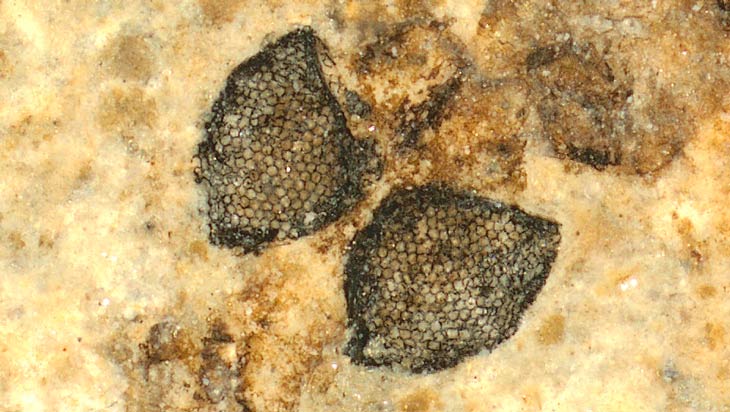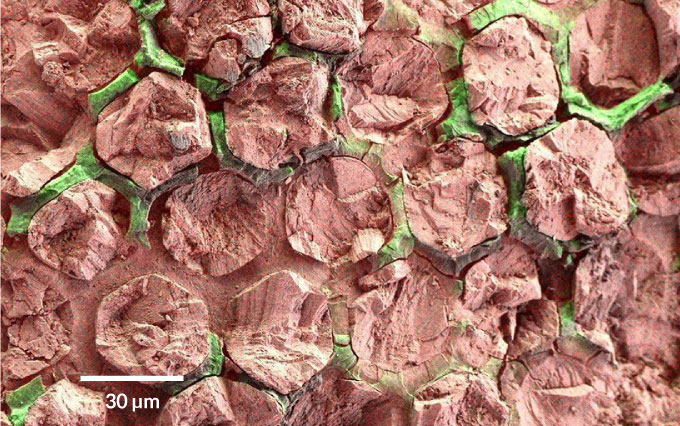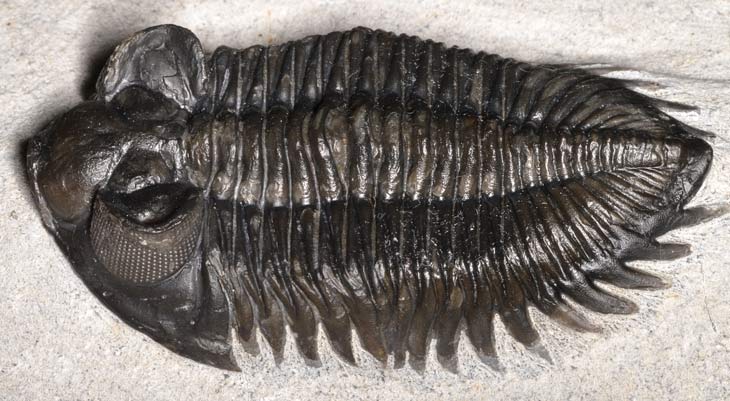By Susan Milius
7 HOURS AGO
Fossil crane flies found in Denmark have crystals in their eyes — individual, see-through mineral pieces where the living eyes’ lenses once were.
Those little crystals of calcium carbonate are renewing a fuss about more mysterious ancient animals, the trilobites. Fossils of those extinct, shield-shaped invertebrates also have crystalized mineral lenses in their eyes. There are no living trilobites, but since at least the 1970s, scientists have been imagining how crystal lenses might have worked for the creatures when they were alive (SN: 2/2/74). Now the crane fly researchers argue that crystal lenses, in crane flies as well as in trilobites, are just quirks of fossilization.
Living crane flies don’t have crystal lenses, the researchers note online August 15 in Nature. Neither do other known living insects or any of the bigger group of jointed-legs animals, the arthropods, says coauthor Johan Lindgren, a molecular paleontologist at Lund University of Sweden. These animals sometimes grow tinier calcite crystals in their eyes or in their rigid exoskeletons for strength, but not “one big crystal basically in each individual lens,” he says.

In the new eye study, Lindgren and colleagues focus on beautifully preserved crane fly specimens of several ancient kinds. The fossils were found in 54-million-year-old sediments in what was once a waterway in today’s Danish peninsula of Jutland. Like modern crane flies, the fossil ones look a bit like mosquitoes, but with longer legs.
One surprise in studying the fossils was their eye-shade pigments. Several kinds of lab analyses identified signs of eumelanin, a form of melanin, in the flies “despite the fact that they’re not supposed to have it,” Lindgren says. Curious about living insects’ pigments, Lindgren and colleagues checked a modern species, the tiger crane fly. They found eumelanin there too, adding to the case that ancient relatives could have had it as well.

Vertebrates use forms of melanin to screen their eyes from stray light that’s not focused by the lens. But biologists had thought that while insects and other arthropods use melanins for body coloring, among other functions, these animals just had a different kind of eye-shading pigment, called ommochromes. Crane flies are the first of any arthropod group, living or extinct, shown to have a melanin pigment in their eyes, Lindgren says.
So far, the evidence looks “suggestive” of eumelanin in the extinct crane fly eyes, says biophysicist Doekele Stavenga from the University of Groningen in the Netherlands, who wasn’t involved in the study. He would like to see some more kinds of tests identifying the fossil pigment.
Unlike with the pigment, crystal lenses don’t show up in living crane flies — a result that doesn’t surprise Lindgren. “There are only deficits of having rocks in your eyes,” he says. For one, crystals of calcium carbonate have optical quirks that need just the right alignment with incoming light to avoid double images. Some mollusks known as chitons have calcite-lensed eye spots that can pick up spatial information about looming predators (SN: 11/19/15). That’s not fancy vision, but it may be enough for mound-shaped animals creeping around the sea floor instead of flying.

If crane flies’ lenses fossilized into calcite lumps, the assumption that trilobite eyes likewise calcified after death seems “more probable,” says Gerhard Scholtz, a zoologist specializing in arthropod evolution at Humboldt University in Berlin. “I always had doubts about the calcitic nature of trilobite eye lenses.”
But physiologist Brigitte Shoenemann at the University of Cologne in Germany is sticking with the idea that living trilobites saw through lenses that were mainly calcium carbonate. One advantage is the mineral’s power to strongly bend incoming light underwater, a help in collecting and focusing ample illumination. Also, she says that trilobite eyes that fossilized under a variety of conditions nonetheless show such lenses. She’s prepared to accept that crane flies didn’t see through mineral crystals but is not ready “to raise this singular finding, as excellent as it may be, to a general principle touching trilobites.” Clearly, the debate goes on.
This is a demo advert, you can use simple text, HTML image or any Ad Service JavaScript code. If you're inserting HTML or JS code make sure editor is switched to "Text" mode.